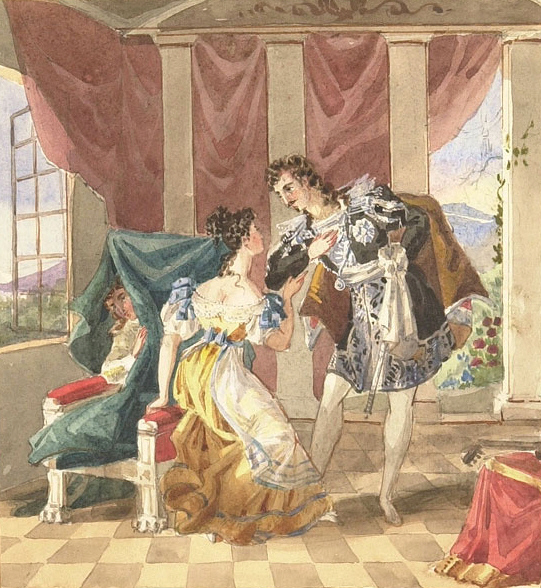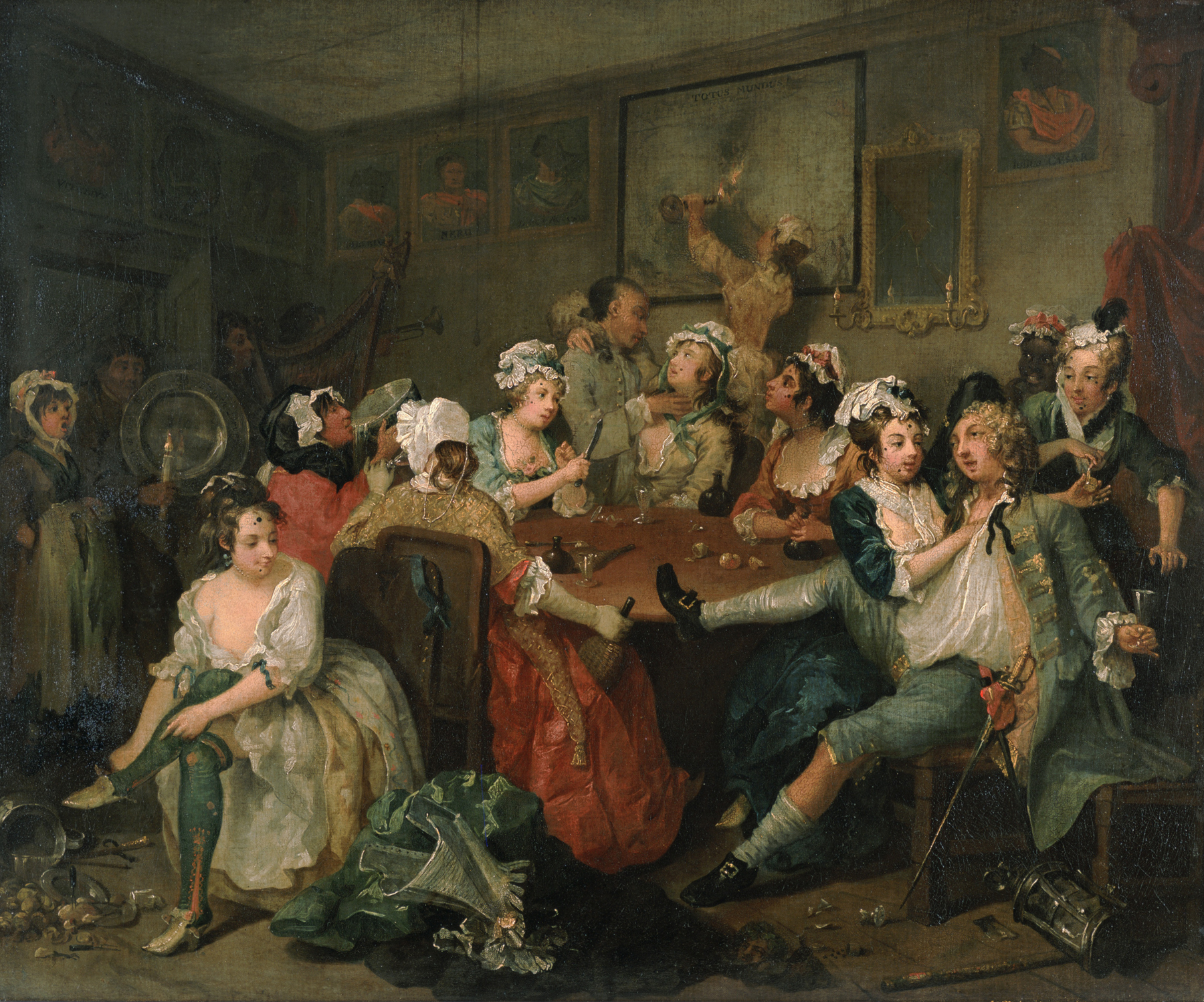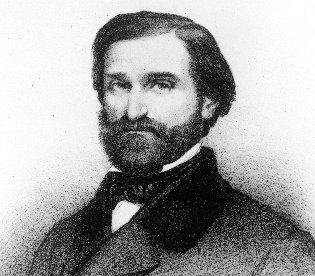|
Ekaterina Siurina
Ekaterina Siurina (Born 2 May 1975) is a International operatic soprano. Life She made her stage debut during her studies, as Gilda ('' Rigoletto'') at the Novaya Opera Theatre. She appeared as a guest at the Metropolitan Opera, the Royal Opera House Covent Garden (2003/04), la Scala, Gran Teatre del Liceu, Vienna State Opera, Deutsche Oper Berlin (2005) Paris Opera and Hamburg State Opera, Bavarian State Opera, the Salzburg Festival (2006) and the Glyndebourne Festival. In 2016, she first appeared in Australia at the Sydney Opera House as Leila (''Les pêcheurs de perles''). Her roles include Pamina ('' Die Zauberflöte''), Susanna ('' Le nozze di Figaro''), Zerlina (''Don Giovanni''), Antonia ('' The Tales of Hoffmann''), Amina ('' La sonnambula''), Adina (''L'elisir d'amore''), Giulietta (''I Capuleti e i Montecchi''), Violetta Valéry (''La traviata''), Nanetta (''Falstaff''), Mimì ('' La Bohème'') and Anne Trulove ('' The Rake’s Progress''). Siurina is married ... [...More Info...] [...Related Items...] OR: [Wikipedia] [Google] [Baidu] |
Soprano
A soprano () is a type of classical female singing voice and has the highest vocal range of all voice types. The soprano's vocal range (using scientific pitch notation) is from approximately middle C (C4) = 261 Hz to "high A" (A5) = 880 Hz in choral music, or to "soprano C" (C6, two octaves above middle C) = 1046 Hz or higher in operatic music. In four-part chorale style harmony, the soprano takes the highest part, which often encompasses the melody. The soprano voice type is generally divided into the coloratura, soubrette, lyric, spinto, and dramatic soprano. Etymology The word "soprano" comes from the Italian word '' sopra'' (above, over, on top of),"Soprano" '' |
Le Nozze Di Figaro
''The Marriage of Figaro'' ( it, Le nozze di Figaro, links=no, ), K. 492, is a ''commedia per musica'' (opera buffa) in four acts composed in 1786 by Wolfgang Amadeus Mozart, with an Italian libretto written by Lorenzo Da Ponte. It premiered at the Burgtheater in Vienna on 1 May 1786. The opera's libretto is based on the 1784 stage comedy by Pierre Beaumarchais, ''La folle journée, ou le Mariage de Figaro'' ("The Mad Day, or The Marriage of Figaro"). It tells how the servants Figaro and Susanna succeed in getting married, foiling the efforts of their philandering employer Count Almaviva to seduce Susanna and teaching him a lesson in fidelity. Considered one of the greatest operas ever written, it is a cornerstone of the repertoire and appears consistently among the top ten in the Operabase list of most frequently performed operas. In 2017, BBC News Magazine asked 172 opera singers to vote for the best operas ever written. ''The Marriage of Figaro'' came in first out of ... [...More Info...] [...Related Items...] OR: [Wikipedia] [Google] [Baidu] |
London Philharmonic Orchestra
The London Philharmonic Orchestra (LPO) is one of five permanent symphony orchestras based in London. It was founded by the conductors Sir Thomas Beecham and Malcolm Sargent in 1932 as a rival to the existing London Symphony and BBC Symphony Orchestras. The founders' ambition was to build an orchestra the equal of any European or American rival. Between 1932 and the Second World War the LPO was widely judged to have succeeded in this regard. After the outbreak of war, the orchestra's private backers withdrew and the players reconstituted the LPO as a self-governing cooperative. In the post-war years, the orchestra faced challenges from two new rivals; the Philharmonia and the Royal Philharmonic, founded respectively in 1946 and 1947, achieved a quality of playing not matched by the older orchestras, including the LPO. By the 1960s the LPO had regained its earlier standards, and in 1964 it secured a valuable engagement to play in the Glyndebourne Festival during the s ... [...More Info...] [...Related Items...] OR: [Wikipedia] [Google] [Baidu] |
Alfredo Daza
Alfredo (, ) is a cognate of the Anglo-Saxon name Alfred and a common Italian, Galician, Portuguese and Spanish language personal name. People with the given name include: * Alfredo (born 1946), Brazilian footballer born as Alfredo Mostarda Filho * Alfredo II (1920–1997), Brazilian footballer born as Alfredo Ramos dos Santos * Albee Benitez (born 1966), Filipino-American businessman and politician born as Alfredo Benitez *Aldo Sambrell, a European actor also known as Alfredo Sanchez Brell *Alfredo (album), an album by Freddie Gibbs and the Alchemist *Alfredo Ábalos (born 1986), Argentine footballer *Alfredo Aceves (born 1982), Mexican baseball player *Alfredo Aglietti (born 1970), Italian footballer and manager *Alfredo Aguilar (born 1988), Paraguayan goaltender *Alfredo Armas Alfonzo (1921–1990), Venezuelan writer * Alfredo Alonso, Cuban-born media executive with Clear Channel Radio * Alfredo Álvarez Calderón (1918–2001), Peruvian diver *Alfredo Amézaga (born 1978), ... [...More Info...] [...Related Items...] OR: [Wikipedia] [Google] [Baidu] |
Iain Burnside
Iain Burnside is a Scottish classical pianist and accompanist, and a former presenter on BBC Radio 3. Following study at Merton College, Oxford, the Royal Academy of Music and the Chopin Academy, in Warsaw he became a freelance pianist, specialising particularly in song repertoire. He has collaborated with many singers, and was particularly close friends with the late soprano Susan Chilcott. Burnside is the godfather of Chilcott's son, Hugh, and following her death in 2003 became his legal guardian. Other vocalists he has worked and recorded with include Laura Claycomb, Matthew Rose, Roderick Williams, with whom he has recorded the complete Finzi baritone songs, and most recently Sarah Connolly, with a release of songs by Korngold. After presenting the Cardiff Singer of the World competition, he became a presenter on Radio 3, for many years fronting the weekly song-orientated show ''Voices'' for which he won a Sony Radio Award. Later he began presenting the Sunday morning p ... [...More Info...] [...Related Items...] OR: [Wikipedia] [Google] [Baidu] |
Charles Castronovo
Charles Castronovo (born June 19, 1975) is an American operatic tenor. Castronovo was born to a Sicilian father and an Ecuadorian mother in Queens, New York, but grew up in Southern California. He attended California State University, Fullerton, for undergraduate studies in classical voice. During his time at the university, his talent came to the attention of William Vendice, the chorusmaster of the Los Angeles Opera, who promptly hired him as a chorister. Career He began his professional career as a resident artist with the Los Angeles Opera. In the summer of 1998 he was a participant in San Francisco Opera's prestigious Merola Opera Program, and later joined the Metropolitan Opera's Lindemann Young Artist Development Program. After garnering much experience at the Metropolitan Opera, a series of significant role debuts soon followed such as Don Ottavio (Mozart's ''Don Giovanni''), Ernesto (Donizetti's ''Don Pasquale''), Fenton (Verdi's ''Falstaff''), Ferrando in Mozart's ''Cos� ... [...More Info...] [...Related Items...] OR: [Wikipedia] [Google] [Baidu] |
The Rake’s Progress
''The Rake's Progress'' is an English-language opera from 1951 in three acts and an epilogue by Igor Stravinsky. The libretto, written by W. H. Auden and Chester Kallman, is based loosely on the eight paintings and engravings '' A Rake's Progress'' (1733–1735) of William Hogarth, which Stravinsky had seen on 2 May 1947, in a Chicago exhibition. The story concerns the decline and fall of one Tom Rakewell, who deserts Anne Trulove for the delights of London in the company of Nick Shadow, who turns out to be the Devil. After several misadventures, all initiated by the devious Shadow, Tom ends up in Bedlam, a hospital for the insane at that time situated in the City of London. The moral of the tale is: "For idle hearts and hands and minds the Devil finds work to do." Performance history It was first performed at the Teatro La Fenice in Venice on 11 September 1951, with Elisabeth Schwarzkopf creating the role of Anne Trulove, and Robert Rounseville that of Tom Rakewell. It w ... [...More Info...] [...Related Items...] OR: [Wikipedia] [Google] [Baidu] |
La Bohème
''La bohème'' (; ) is an opera in four acts,Puccini called the divisions '' quadri'', '' tableaux'' or "images", rather than ''atti'' (acts). composed by Giacomo Puccini between 1893 and 1895 to an Italian libretto by Luigi Illica and Giuseppe Giacosa, based on ''Scènes de la vie de bohème'' (1851) by Henri Murger. The story is set in Paris around 1830 and shows the Bohemian lifestyle (known in French as "") of a poor seamstress and her artist friends. The world premiere of ''La bohème'' was in Turin on 1 February 1896 at the Teatro Regio, conducted by the 28-year-old Arturo Toscanini. Since then, ''La bohème'' has become part of the standard Italian opera repertory and is one of the most frequently performed operas worldwide. In 1946, fifty years after the opera's premiere, Toscanini conducted a commemorative performance of it on radio with the NBC Symphony Orchestra. A recording of the performance was later released by RCA Victor on vinyl record, tape and compac ... [...More Info...] [...Related Items...] OR: [Wikipedia] [Google] [Baidu] |
Falstaff (Verdi)
''Falstaff'' () is a comic opera in three acts by the Italian composer Giuseppe Verdi. The Italian-language libretto was adapted by Arrigo Boito from the play ''The Merry Wives of Windsor'' and scenes from '' Henry IV, Part 1'' and '' Part 2'', by William Shakespeare. The work premiered on 9 February 1893 at La Scala, Milan. Verdi wrote ''Falstaff'', the last of his 28 operas, as he approached the age of 80. It was his second comedy, and his third work based on a Shakespeare play, following ''Macbeth'' and ''Otello''. The plot revolves around the thwarted, sometimes farcical, efforts of the fat knight Sir John Falstaff to seduce two married women to gain access to their husbands' wealth. Verdi was concerned about working on a new opera at his advanced age, but he yearned to write a comic work and was pleased with Boito's draft libretto. It took the collaborators three years from mid-1889 to complete. Although the prospect of a new opera from Verdi aroused immens ... [...More Info...] [...Related Items...] OR: [Wikipedia] [Google] [Baidu] |
La Traviata
''La traviata'' (; ''The Fallen Woman'') is an opera in three acts by Giuseppe Verdi set to an Italian libretto by Francesco Maria Piave. It is based on '' La Dame aux camélias'' (1852), a play by Alexandre Dumas ''fils'' adapted from his own 1848 novel. The opera was originally titled ''Violetta'', after the main character. It was first performed on 6 March 1853 at La Fenice opera house in Venice. Piave and Verdi wanted to follow Dumas in giving the opera a contemporary setting, but the authorities at La Fenice insisted that it be set in the past, "c. 1700". It was not until the 1880s that the composer's and librettist's original wishes were carried out and " realistic" productions were staged. ''La traviata'' has become immensely popular and is among the most frequently performed of all operas. Composition history For Verdi, the years 1851 to 1853 were filled with operatic activity. First, he had agreed with the librettist Salvadore Cammarano on a subject for what ... [...More Info...] [...Related Items...] OR: [Wikipedia] [Google] [Baidu] |
I Capuleti E I Montecchi
''I Capuleti e i Montecchi'' (''The Capulets and the Montagues'') is an Italian language, Italian opera (''Tragedia lirica'') in two acts by Vincenzo Bellini. The libretto by Felice Romani was a reworking of the story of ''Romeo and Juliet'' for an opera by Nicola Vaccai called ''Giulietta e Romeo (Vaccai), Giulietta e Romeo'' and based on the play of the same name by Luigi Scevola written in 1818, thus an Italian source rather than taken directly from William Shakespeare. Bellini was persuaded to write the opera for the 1830 Carnival of Venice, Carnival season at the Teatro La Fenice in Venice, with only a month and a half available for composition. He succeeded by appropriating a large amount of music previously written for his unsuccessful opera ''Zaira (opera), Zaira''. The first performance of ''I Capuleti e i Montecchi'' took place on 11 March 1830. Composition history After ''Zaira'' Following the poor reception which ''Zaira'' received in Parma, Bellini returned to M ... [...More Info...] [...Related Items...] OR: [Wikipedia] [Google] [Baidu] |
L'elisir D'amore
''L'elisir d'amore'' (''The Elixir of Love'', ) is a ' ( opera buffa) in two acts by the Italian composer Gaetano Donizetti. Felice Romani wrote the Italian libretto, after Eugène Scribe's libretto for Daniel Auber's ' (1831). The opera premiered on 12 May 1832 at the Teatro della Canobbiana in Milan. Background Written in haste in a six-week period, ''L'elisir d'amore'' was the most often performed opera in Italy between 1838 and 1848 and has remained continually in the international opera repertory. Today it is one of the most frequently performed of all Donizetti's operas: it appears as number 13 on the Operabase list of the most-performed operas worldwide in the five seasons between 2008 and 2013. There are a large number of recordings. It contains the popular tenor aria " Una furtiva lagrima", a '' romanza'' that has a considerable performance history in the concert hall. Donizetti insisted on a number of changes from the original Scribe libretto. The best known ... [...More Info...] [...Related Items...] OR: [Wikipedia] [Google] [Baidu] |




_1.jpg)


